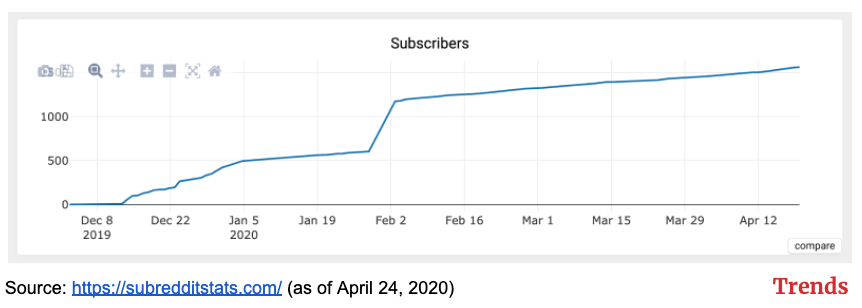nlopchantamang.com
Will Online Sellers Jump Ship to ‘Drop Servicing’?
Ethan Brooks

The Signal: Searches for "drop servicing" are on the rise as a generation of internet entrepreneurs (and a planet stuck at home) seek new ways of creating an income.
Drop servicing -- also called "service arbitrage" -- is simple: Find a customer who needs a service, sell them that service, and then outsource the work to someone else for less, keeping the profit.
It’s not a new business model. Rather, it’s a recently coined buzzword used to describe old ideas in a new way. A drop servicer acts as a middleman, finding qualified freelancers and bringing them projects, while owning the entire client relationship. It’s similar to the work creative agencies have done for years.
It’s being held up as a potential alternative to drop shipping, which some say has become oversaturated.
The Opportunity: While it’s certainly not passive income, drop servicing offers multiple opportunities including:
Teaching New Dogs Old Tricks: If this trend continues, many first-time entrepreneurs will be starting their first business with a drop-servicing model, and they’ll be looking for advice they can trust. The education space for this topic is still relatively uncrowded, with 3 primary contenders -- Drop Servicing Pro ($997), Drop Servicing Blueprint ($997), and Drop Servicing Agency ($500) -- offering premium training.
The r/dropservicing subreddit has seen steady growth since its creation in December. Yet the moderators are still by far the most active commenters and most questions only get a handful of comments. There’s still room to get in early, and build thought leadership in the community.

Searches for drop servicing are currently strongest in South Africa, followed by the UK, Malaysia, Vietnam, and Australia. You could build targeted training for one or more of these countries, similar to the way Drop Ship Formula offers niche drop-ship training for business owners in the UK.

Shopify for Drop Servicers: Drop servicing is not a new idea, but neither was drop shipping when AliExpress or Shopify were founded. Those companies became giants in part by building platforms designed to service ambitious entrepreneurs in their journey toward becoming drop shippers.
Software like Dropified made it easy for drop shippers to connect with suppliers, select products, and offer them for sale via their Shopify website. Yet no such service exists for drop-servicing businesses.
Instead, drop-servicing entrepreneurs currently need to build a website that collects orders, and then individually pass those orders along to freelancers on Fiverr or elsewhere. This takes time, which can eat up the profits of the business. Platforms or plugins that make this interaction easier may be in demand as this trend gathers steam.
Drop shippers also rely on unique tools for market research (JungleScout, Intelligynce, Scope), inventory management (Dropified, Inventory Source, ecomdash), and more. Drop servicers may need their own unique versions of these kinds of tools.
One way to think about this: What tool do you wish you could have invented before drop shipping became big? How might you adapt that to the unique needs of drop servicers?
Selling Services: A lot of the current advice (and competition) focuses on building drop-servicing businesses that offer graphic design, web development, or marketing services. By looking elsewhere, you can find higher margins and lower competition.
"I think the real untapped growth is in professional, high-ticket, specialized services that are less saturated," Liam James Kay told us. His early tutorial on drop servicing seems to have kick-started the trend.
"There's a million design agencies, services, and apps online, so it doesn't make sense to start a generic design-based, drop-servicing business," he said. Instead, entrepreneurs should explore specialized services such as architectural designs, copywriting, and business plan writing, he said: "These are professional services that can be outsourced on Fiverr Pro or Upwork, but business owners would be happy to pay a high price for."
While deciding on what service to build your business around, look for:
- An Industry You Know: You should know enough about the industry to judge the quality of the freelancers you outsource to, and be able to answer the most common questions customers have.
- Niche Services: Targeting a very specific service allows you to streamline marketing, production, and support. Design, for example, is too broad on its own. But Liam James Kay has made $8k/month in profit drop servicing book cover designs, which is more specific and requires roughly the same work for each client. You could get even more niche by specializing in a single genre.

- Recurring Revenue: To maximize your revenue, opt for services that people need over and over. Patent drawing, for example, gets 2.9k monthly searches on Google, and is something companies and inventors typically need more than once if they’re developing their own products.
Consider returning to the Trends archives, too, which can be a useful place to find these kinds of ideas. For example, Dental SEO, a trend we wrote about earlier this year, checks all of the boxes above.

Leave a Comment